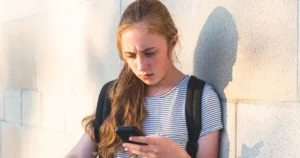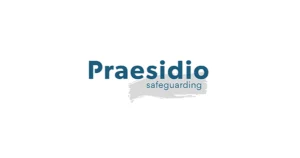What is county lines?
How criminals target children and young people
Safeguarding agency, Praesidio, have created the below guidance to help parents, carers and professionals understand how Criminals may target children through radicalisation and county lines as well.
Learn about county lines
County Lines is a method of drug dealing by organised criminal groups (OCGs). These groups typically involve the movement of drugs from large cities in England to market and coastal towns and villages around the UK. They aim to establish new operations in these places.
County Lines is also a form of criminal exploitation that typically relies on older gang members grooming children from inner city areas. However, research from The Commission on Young Lives found that criminals also groom children from “suburban and middle-class England.”
The gangs spot vulnerabilities and target these children to transport the drugs and money and manage the operation at the dispersed locations. It’s at these locations that further exploitation of local children follows.
The ‘lines’ are the dedicated mobile phone numbers that the OCG uses to manage the movement and selling of drugs.
More on the page
- How might a child be vulnerable to county lines?
- How groomers target children online
- Further reading
How might a child be vulnerable to county lines?
Money-making prospects or earning respect may entice children into county lines. Additionally, their peers and social media may glamourise the drug-dealing lifestyle. However, many are identified as vulnerable and groomed in the real world or online by OCGs.
Groomers exploit children who exhibit low self-esteem and a need for identity, belonging and purpose. Or a child might demonstrate real world or online risk-taking behaviour. Some children are more at risk because of these additional vulnerabilities:
- Adverse childhood experiences (ACEs)
- School non-attendance or exclusion
- A physical or learning disability
- Going missing from home
- Being looked after
Some children also may be drug users themselves.
Groomers also exploit children’s use of the internet. For instance, they may frequent the same online social media groups and messaging apps that children use to explore their sexuality, understand the changes associated with adolescence or seek help with emotional or mental health issues. Therefore, groomers look for children with high levels of internet use and low levels of adult supervision.
How groomers target children online
Social media
Organised crime groups use social media to endorse and advertise drugs, promoting a superficially glamorous gangster lifestyle.
Encrypted platforms can hide illegal activity. However, this activity might operate in plain sight by using hashtags and emojis as code for drug, violence and sexual activities. Children learn the ‘language’ then know how to easily purchase drugs.
Additionally, the apparent anonymity of the internet might encourage children to believe that buying and selling drugs in this way is low risk.
OCGs might use automated chatbots to engage with children but are more likely to use real accounts operated on behalf of the OCG. Groomers find contacting children this way fairly easy. In this way, they can contact large numbers of children at a minimal cost.
And the low risk of the initial engagement means that groomers can target multiple potential victims simultaneously.
Online video games
OCGs may use the chat function of online games and newer platforms linked to the emerging metaverse. They offer opportunities for OCGs to exploit largely unmoderated open-world gaming and social contact environments. This gives them the opportunity to engage with children and develop an online drugs marketplace.
The exploitation model is one populated by profiles of real children rather than fake accounts that adults manage. Coupled with the anonymity of the virtual world, the model is difficult for children to recognise or resist.
Other technology
OCGs are also developing e-commerce techniques and technology to develop drug supply chains. Selling drugs online offers a low-cost distribution method that removes some of the risks associated with face-to-face sale of drugs, such as conflict with rival dealers or arrest.
The county lines model is associated with mobile phone lines. However, affordable contract-free smartphones are replacing disposable pay-as-you-go phones. The contract-free smartphones offer communication with more affluent users of recreational drugs via social media and networking platforms.
Technology also offers payment for drugs via cash apps and mobile payment services. Because of the additional layer of security associated with these methods, they might be more attractive for OCGs as they prevent the loss or theft of cash proceeds.
Encrypted messaging applications provide a cheap and secure means of communication and reduce the risk of police intervention. Additionally, the decentralised nature of social media and messaging platforms could make it more difficult for the police to access data records. Some messaging apps don’t even retain any data, which creates a further challenge for law enforcement.
Further reading
Learn more about the areas that might impact County Lines and ways to find support. Feeling confident in your understanding will help you feel confident in dealing with the issue if it comes up.
Featured online grooming articles
 Research
Research
Teen girls’ experiences of harm online
Our latest Digital Wellbeing Index report shows that teen girls experience significantly more negative outcomes online than other children.
 Expert opinion
Expert opinion
How to counter online hate and extremism with young people
Hate and Extremism Analyst, Hannah Rose, shares insight into how young people might get involved online. Learn how to counter online hate.
 Research
Research
Our Greater Manchester pilot project: Introducing Bee Smart
We are thrilled to have received funding from the Government’s Media Literacy Taskforce Fund for the Bee Smart project.
 Q&A
Q&A
How teachers tackle online child-on-child abuse in schools
Expert and teacher Dr Tamasine Preece discusses the struggles teachers face when it comes to online child-on-child abuse.
 News & blogs
News & blogs
How to protect children from online sexual harm
Learn how to minimise the risks and what you can do to help your child if you discover they have been the victims of online sexual harm.


